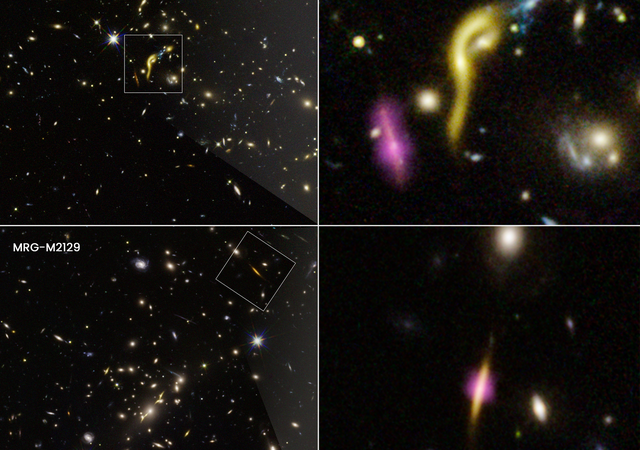Source: CBS News Scientists studying early galaxies were stunned earlier this year when they discovered six massive galaxies that seem to have died during the universe’s most active period of star birth. NASA’s Hubble Space Telescope spied the six galaxies, which appeared to have run out of the cold hydrogen gas needed to make stars
Source: CBS News
Scientists studying early galaxies were stunned earlier this year when they discovered six massive galaxies that seem to have died during the universe’s most active period of star birth. NASA’s Hubble Space Telescope spied the six galaxies, which appeared to have run out of the cold hydrogen gas needed to make stars while most other galaxies were producing new stars at a rapid pace.
“At this point in our universe, all galaxies should be forming lots of stars. It’s the peak epoch of star formation,” Kate Whitaker, a University of Massachusetts, Amherst assistant professor of astronomy and lead author of a recent study on the six galaxies, said in a press release. “So what happened to all the cold gas in these galaxies so early on?”
Without the cold hydrogen gas necessary to fuel stars and birth new ones, the galaxies are essentially dead. They’re also unable to rejuvenate, even if they have absorbed nearby smaller galaxies and gas clouds. Whitaker said that the act of absorbing just “puffs up” the dead galaxies.
But the reason why they died in the first place is still a mystery.
“Did a supermassive black hole in the galaxy’s center turn on and heat up all the gas?” Whitaker posited. “If so, the gas could still be there, but now it’s hot. Or it could have been expelled and now it’s being prevented from accreting back onto the galaxy. Or did the galaxy just use it all up, and the supply is cut off?”

“These are some of the open questions that we’ll continue to explore with new observations down the road,” Whitaker added.
Hubble was used by the astronomers to pinpoint the galaxies, and then, using the Atacama Large Millimeter/submillimeter Array (ALMA) in northern Chile, the researchers were able to detect whether or not the galaxies contained the cold dust that signals the existence of cold hydrogen gas.
But since the galaxies were so old and so far away, scientists wouldn’t have been able to spot them without a technique known as “gravitational lensing,” NASA explained. The team used super-massive galaxy clusters that were closer to Earth as natural telescopes. Light from background objects gets magnified by the gravity of these clusters. According to NASA, when very distant galaxies are behind a cluster, they appear stretched and magnified in the images, which helps astronomers see details that would otherwise be lost without the magnification from the galaxy clusters.
“By using strong gravitational lensing as a natural telescope, we can find the distant, most massive, and first galaxies to shut down their star formation,” said Whitaker. “I like to think about it like doing science of the 2030s or 40s — with powerful next-generation space telescopes — but today instead by combining the capabilities of Hubble and ALMA, which are boosted by strong lensing.”
Mohammad Akhshik, principal investigator of the Hubble observing program, said that the team pulled together the largest sample to date of these rare, dead galaxies in the early universe.
Source: CBS News

































Leave a Comment
You must be logged in to post a comment.